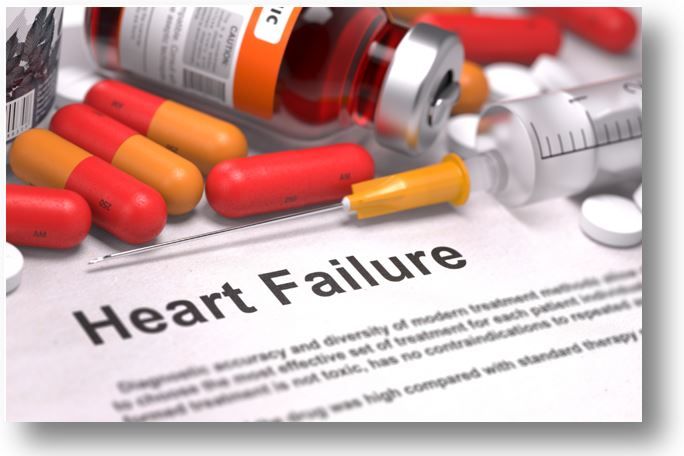Finerenone Improves Outcomes in Patients with Heart Failure and Mildly Reduced or Preserved Ejection Fraction
ESC 2024: Findings from the FINEARTS-HF clinical trial provide the first definite evidence that an MRA can be beneficial in patients with HFmrEF/HFpEF.

In patients with heart failure (HF) and mildly reduced ejection fraction (HFmrEF) or preserved ejection fraction (HFpEF), finerenone reduced HF events and cardiovascular (CV) death, according to findings from the FINEARTS-HF clinical trial.1
Results from the double-blind, randomized trial were presented during a Hot Line session at the European Society of Cardiology (ESC) 2024 Congress in London and simultaneously published in The New England Journal of Medicine.
“Sodium-glucose co-transporter 2 (SGLT2) inhibitors are the only treatment for HFmrEF/HFpEF with a strong guideline recommendation and there remains a high unmet need for additional therapies to improve morbidity and mortality in this large patient population,” principle investigator Scott D. Solomon, MD, professor of medicine at Harvard Medical School and senior physician and director of the Clinical Trials Outcomes Center at Brigham and Women’s Hospital, said in an ESC press release.2 “Steroidal mineralocorticoid receptor antagonists (MRA) have proven benefits in HF with reduced ejection fraction (HFrEF), but their efficacy in HFmrEF/HFpEF has not been conclusively established. We investigated the non-steroidal MRA, finerenone, in patients with HFmrEF/HFpEF in the FINEARTS-HF trial, and a significant positive impact on outcomes was observed.”
Solomon and colleagues randomly assigned 6001 patients with symptomatic HF and left ventricular ejection fraction (LVEF) of 40% or more to receive once-daily finerenone (up to 40mg depending on baseline estimated glomerular filtration rate [eGFR]) or placebo, in addition to usual therapy. Median follow-up was 32 months, according to the study abstract.1
The primary outcome was a composite of total worsening HF events (an event defined as a first or recurrent unplanned hospitalization or urgent visit for HF) and CV death, according to the abstract.1 Secondary outcomes included all-cause mortality and a composite kidney outcome, which was defined as sustained 50% or greater decline in eGFR, sustained decline in eGFR to less than 15 ml/min/1.73 m2 or initiation of chronic dialysis or kidney transplantation, according to the press release.2
Overall, 6001 participants (mean age, 72 years; 46% women; mean LVEF, 53%) from more than 650 sites across 37 countries were included in the analysis.2
Results showed that over a median of 32 months, the primary outcome occurred 1083 times in the finerenone group and 1283 times in the placebo group (rate ratio 0.84, 95% CI 0.74-0.95; P = .007). The total number of worsening HF events was 842 in the finerenone group and 1024 in the placebo group (rate ratio 0.82, 95% CI 0.71 to 0.94; P = .006). Also, researchers reported that 8.1% of patients in the finerenone arm and 8.7% of those in the placebo arm died from CV causes (HR 0.93, 95% CI 0.78-1.11).1
In addition, the primary outcome results were consistent in all prespecified subgroups, including those based on ejection fraction or baseline use of SGLT2 inhibitors, according to the ESC press release.2
Investigators also noted that finerenone was associated with an increased risk of hyperkalemia and a reduced risk of hypokalemia.1
“The FINEARTS-HF trial provides the first definite evidence that an MRA is beneficial in HFmrEF/HFpEF. We have four pillars of guideline-directed medical therapy in HFrEF but only SGLT2 inhibitors as a treatment option for HFmrEF/HFpEF,” Solomon said in the press statement.2 “Given that finerenone was beneficial in patients already receiving an SGLT2 inhibitor, our findings point to finerenone as a new second pillar in HFmrEF/HFpEF.”
References:
- Solomon SD, McMurray JJV, Vaduganathan M, et al. Finerenone in heart failure with mildly reduced or preserved ejection fraction. NEJM. Published online September 1, 2024. doi:10.1056/NEJMoa2407107
- Finerenone improves outcomes in a common type of heart failure. News item. European Society of Cardiology. September 1, 2024. Accessed September 4, 2024. https://www.escardio.org/The-ESC/Press-Office/Press-releases/Finerenone-improves-outcomes-in-a-common-type-of-heart-failure